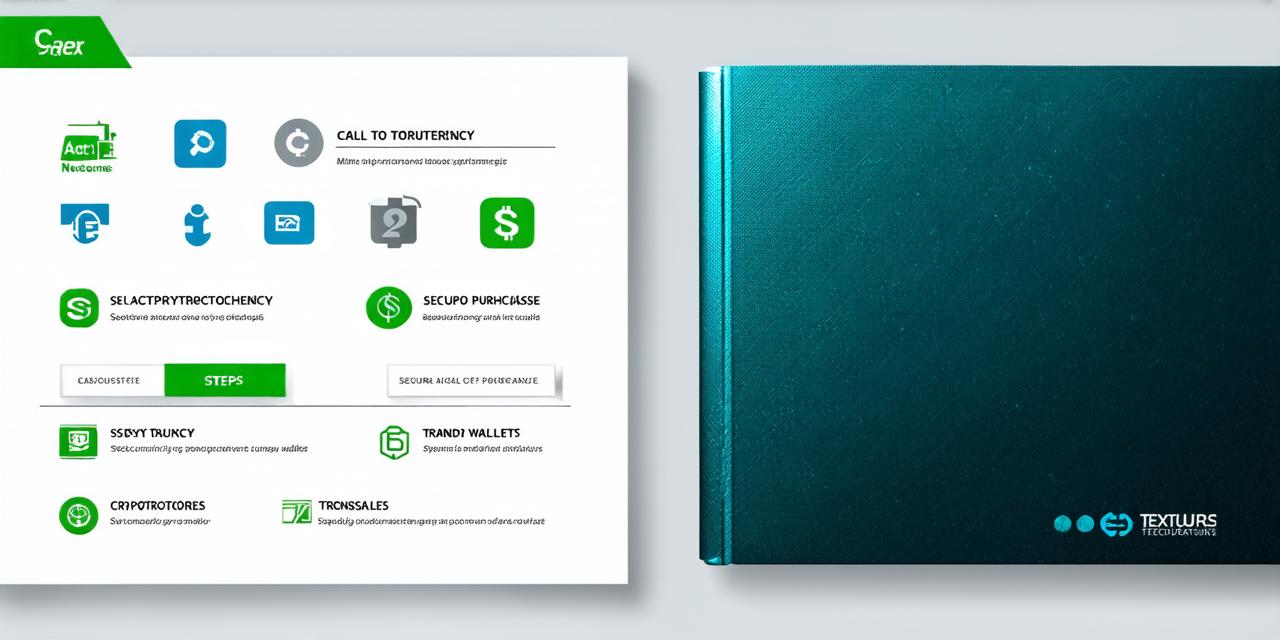Cryptocurrency has become an increasingly popular form of payment in recent years, and for good reason. It offers users greater privacy and security compared to traditional forms of payment, as well as faster transaction times and lower fees. In this article, we will explore how to make purchases using cryptocurrency, including the basics of cryptocurrencies, how to set up a wallet, and how to use cryptocurrency for various types of transactions.
Introduction
Cryptocurrency is a type of digital or virtual currency that uses encryption techniques to secure its transactions and to control the creation of new units. It is decentralized, meaning it is not controlled by any government or financial institution. Some of the most well-known cryptocurrencies include Bitcoin, Ethereum, Litecoin, and Ripple.
How to Set Up a Wallet
The first step in making purchases using cryptocurrency is setting up a wallet. A cryptocurrency wallet is a secure digital space where you can store your cryptocurrency. There are two main types of cryptocurrency wallets: hardware wallets and software wallets. Hardware wallets are physical devices that keep your cryptocurrency offline, making them more secure than software wallets. Software wallets are computer programs that allow you to store and manage your cryptocurrency online. Some popular software wallets include MyEtherWallet, Coinbase Wallet, and Exodus.
Making Purchases with Cryptocurrency
Once you have set up a wallet, you can start making purchases using cryptocurrency. To make a purchase, you will need to find a merchant that accepts cryptocurrency as payment. Some merchants accept multiple forms of cryptocurrency, while others only accept one or two. You can search for merchants online or use specialized websites like CoinMap to find stores and services that accept cryptocurrency.
When making a purchase with cryptocurrency, you will need to provide your wallet address to the merchant. Your wallet address is a unique identifier that allows you to receive payments in your wallet. The merchant will then send the cryptocurrency to your wallet address. Once the transaction has been confirmed on the blockchain (a decentralized digital ledger that records all transactions), the cryptocurrency will be deducted from your balance and credited to the merchant’s account.
Benefits of Using Cryptocurrency for Purchases
There are several benefits to using cryptocurrency for purchases, including:

- Privacy: When making a purchase with cryptocurrency, you do not need to provide personal information like your name or address. This makes it easier to maintain your privacy and prevent identity theft.
- Security: Cryptocurrency transactions are secured using encryption techniques, which makes them more secure than traditional forms of payment. Additionally, because cryptocurrency is decentralized, it is not controlled by any government or financial institution, reducing the risk of fraud or interference.
- Speed: Cryptocurrency transactions can be completed in a matter of seconds, compared to the minutes or hours it can take for traditional bank transfers to clear.
- Lower fees: Cryptocurrency transactions typically have lower fees than traditional bank transfers, especially for international transactions.
FAQs
Q: What are the risks associated with using cryptocurrency?
A: While cryptocurrency is generally safe and secure, there are still risks involved. These include price volatility (the value of cryptocurrency can fluctuate rapidly), hacking (cryptocurrency wallets can be hacked if not properly secured), and legal issues (cryptocurrency is not recognized as a legal currency in many countries).
Q: How do I know which cryptocurrencies to use for purchases?
A: The best cryptocurrency to use for a particular purchase will depend on the merchant’s preference. Some merchants may only accept certain types of cryptocurrency, while others may accept multiple forms of payment. You can also check online forums and reviews to see which cryptocurrencies are most widely accepted by merchants.
Summary
Cryptocurrency is a powerful tool that offers users greater privacy and security compared to traditional forms of payment.
